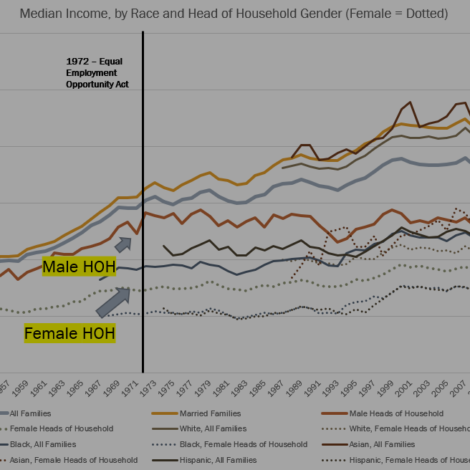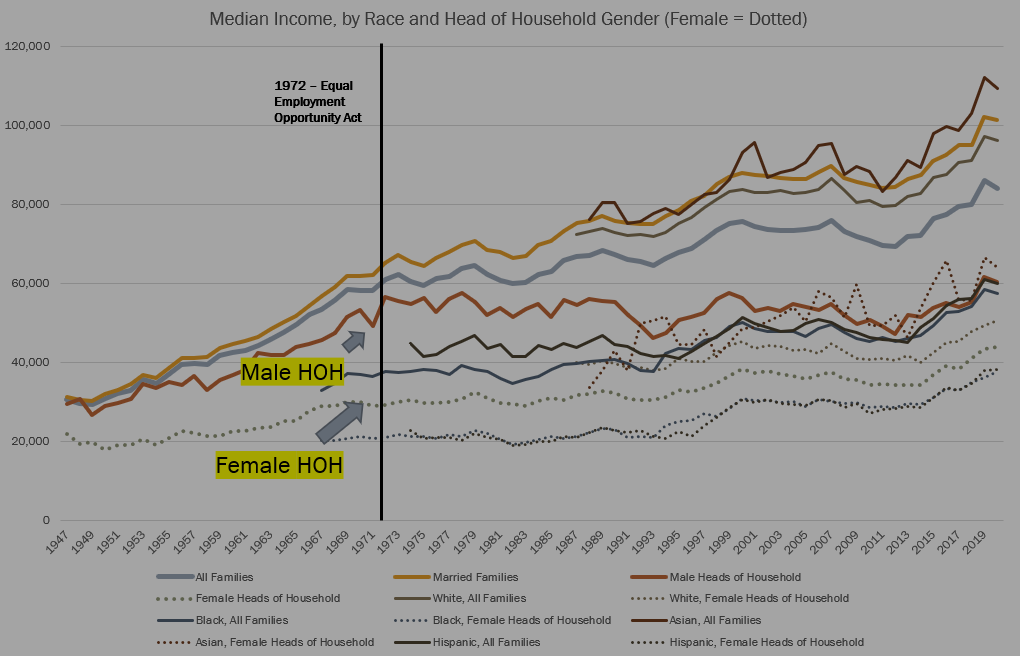Despite evidence that factors more related to family structures, segregation, and poverty than anything else are positively associated with violent crime, and that public assistance – or welfare – uptake is associated with less crime, there’s still a strong hesitation toward transfer payments to the poor. According to a poll by the conservative-leaning Cato Institute 59% of respondents preferred focusing on the underlying causes of poverty rather than cash assistance. Sentiments toward public assistance are telling: according to Pew Research almost half of polled respondents believe low income Americans have it easy because they effectively get free cash. To say the least welfare isn’t viewed all that positively in the United States.
And to be sure there’s absolutely a case to be made against welfare as too-late-too-inefficient for mitigating poverty. Obviously transfer payments to households that end up below an income threshold is less desirable than addressing the market failures leading to these low incomes. And there’s no guarantee that households receiving welfare will end up above the poverty line after payments. Cash assistance doesn’t fix poverty as much as bandage it to keep households afloat.
But cash assistance also isn’t just poorly timed aid. Substantial evidence supports transfer payments to households as a deterrent to crime. Post-tax income inequality is smaller than pre-tax, in part due to transfers to households qualifying for cash aid. As inefficient as it is there is notable good.
Yet still, there’s a pervasive view that welfare in the US is rife with fraud. Half of over 1,200 Americans polled in 2019 thought misrepresentation of eligibility for Temporary Assistance for Needy Families (TANF), the main cash assistance program in the US, was either very or somewhat common. How is it that almost 95% of Americans polled by the Heritage Foundation in 2017 found it necessary to eliminate fraud in welfare, as costly as it might be to eliminate an issue happening with less than 5% of assistance payments?
To understand that dissonance we need to understand the great American Welfare Queen Myth.
Birth of the American Welfare Queen
In August of 1974 Linda Taylor was arrested in Chicago for welfare fraud charges she incurred in Michigan. Taylor initially fled on bond and her story became a media sensation in Chicago, where the Chicago Tribune dropped a report on Taylor’s fraud. The story got national attention during the 1976 Presidential Campaign when Ronald Reagan used her story for political gain, embellishing so far as to suggest that Taylor had stolen up to a million dollars from the US welfare system. Taylor was never charged with stealing more than $9,000 at the time.
But Reagan knew what he was doing by using the Taylor story as a rallying cry for reforming welfare. The 60’s and 70’s were dotted with stories of abuse in the welfare system, and the impact of the 1970’s stagflation on urban centers like NYC gave conservative fiscal hawks a victim-blaming narrative to explain away decay in Black communities. To them it was obvious that an overly generous welfare system was catering to laziness inherent in African Americans, a theme as old as American Slavery. They just needed a way to say it without being explicit, “racism without racists.” The Welfare Queen trope was perfect, it had a familiar anecdote in Linda Taylor, and her dual identity of being a Black woman played on two violations of Protestant American values: hypersexuality (women were and still are often accused of having children out of wedlock to collect larger welfare benefits) and laziness.
Was any of this true about Black women like Linda Taylor? Well first African Americans may be overrepresented among the poor, but they’re not the majority of welfare recipients. Studies of the time demonstrate that African Americans were overrepresented in media depictions of welfare recipients, accounting for three fourths of representations although Blacks made up only a third of welfare recipients. Additionally, there’s no evidence to suggest that women systematically were having children out of wedlock to qualify for higher welfare benefits. Today births out of wedlock are climbing across the globe, regardless of welfare policy changes.
Why did Taylor and the Welfare Queen trope shape so much of thinking around welfare reform for the next two decades? Likely because discrimination and bias is a pillar of American society, even if today it is more subconscious than before. Often discrimination occurs because of biases, which can be explicit such as when someone actively believes that Black women are meeting their hypersexual and lazy desires by relying upon a welfare system that benefits recipients with more children.
They can also be implicit, as has been seen in studies where participants watch children, and those who are first prompted to look out for misbehaving children spend more time monitoring Black children than their counterparts. The fact is that studies like those have found evidence of implicit racial biases among people of various backgrounds, including anti-Black biases among Blacks. It’s may be shameful, but it’s likely that all of us retain implicit biases to some extent, which allows for discrimination to occur in the US regardless of statistical facts. As Americans, the Welfare Queen trope didn’t make us biased against low income Black women. It played on the biases we already had.
Scapegoats and Zero-Sum Games
One of the most fascinating and important arenas to observe biases in action is in the labor market. A University of Chicago Nobel Prize winning researcher named Gary Becker was one of the first mainstream economists to attempt to model discrimination in a labor market, arguing that discrimination may stem from preferences similar to what is analyzed in consumer behavior. In Becker’s model people have tastes for working with certain races and rationally take efforts to create segregation. This could lead to a labor market with different demand curves based on race, with less non-White workers demanded and hired at the same real wage.
An important note from Becker’s model is that equity is in some ways a zero-sum game. It requires sacrifices from the preferential group. If White workers are inefficiently being hired at an elevated market wage, and therefore Black workers are being hired at lower market wages, then equity in the labor market will look like higher wages for Black workers and lower wages for White workers. This is important, because while most Americans arguably desire some abstract vision of equality, fewer are likely willing to sacrifice their resources – privileges – to attain that equality.
Becker’s model of labor market discrimination can be applied to a lot of stratifications. Studies suggest being a woman, overweight, or physically unattractive can also put you at a disadvantage in searching for a job. Anecdotal evidence suggests that gender expression, sexuality, and disability status have also impeded employment.
Following civil and violent unrest in the 1960s, and the assassinations of prominent civil rights leaders like Martin Luther King, Medgar Evers, and Malcolm X, the US passed a slew of laws aimed at establishing civil rights for minorities and preventing discrimination. Since then the wage gap between minority groups has closed substantially, although little has happened to the wage gap between minorities in aggregate and White men.

In a weird way, this explains why the Welfare Queen stereotype was so appealing for Reagan competing for the Republican nomination in 1976. The Southern Strategy employed by the Republican party banked on fears of African Americans gaining political power and using that power to strip the public coffers of taxpayer dollars while degrading the real economic privileges that came from Whiteness in America. The Civil Rights Act and other laws aimed at suppressing discrimination and embracing equality struck a chord in the Jim Crow regions, and the GOP was more than ready to play on deeply buried fears with the image of a Black woman collecting welfare checks and reproducing more soon-to-be voters.
It would be an error to overlook how far public policy has come since Reagan first injected the Welfare Queen stereotype into the political dialogue. But a sober analysis can also only conclude that as helpful as civil rights laws have been, they only did so much to change the “premarket” conditions that shape outcomes for minorities nationally. For example, on a more micro scale take NYC: in 2022 it’s still one of the most highly racially segregated cities in the nation. The effects of redlining still run through our elementary and high schools, creating unequal outcomes based on neighborhoods that proxy concentrations of poverty and racial makeup. Discrimination will always be a problem for Americans until we get to the point that your childhood zip code isn’t a predictor of your mid-life income. And so will the fear that someone is defrauding the government in search of their unemployed, birth-control-free, small value, American dream.
